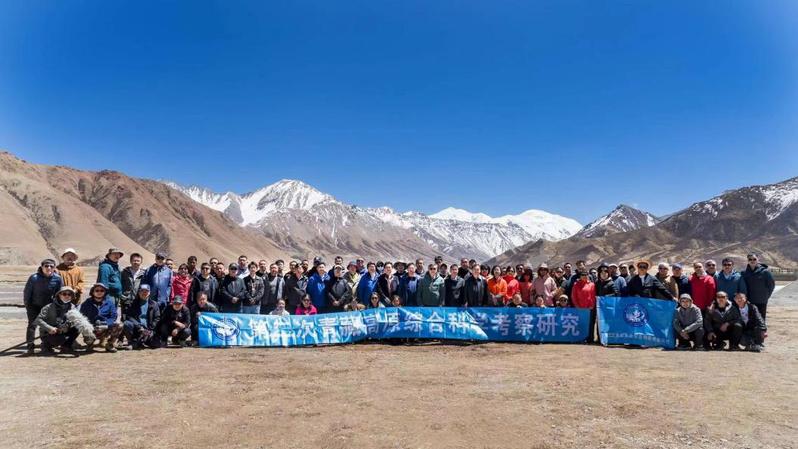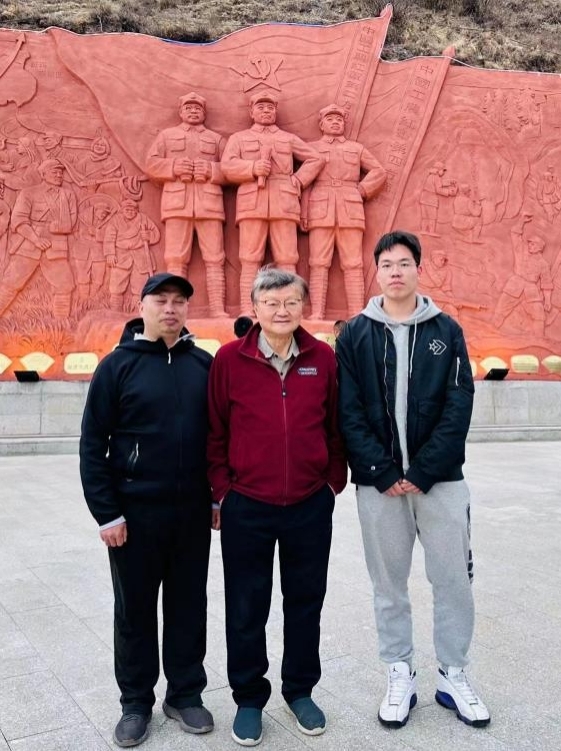On April 28, the "Field comprehensive observation experiment and field scientific investigation of Climate Response Project in Sanjiangyuan Area and Glacier Area" was successfully concluded in Xining City, Qinghai Province. Xu Xiangde, academician of the Chinese Academy of Engineering and researcher of the Chinese Academy of Meteorological Sciences, served as the commander of the expedition. More than 20 units, including our university, participated in the expedition. Zhang Hao is the only postgraduate student in the research team.
The expedition time is from April 17 to April 28, the expedition team to Xining, Maqin, Jiuzhi, Banma in Qinghai Province, Luhuo, Yajiang, Malkang, Songpan in Sichuan Province, Minxian county in Gansu Province and other places, along the way to visit the Yellow River basin Tangnaihai hydrological observation station, Awancang Yellow River wetland, Jiuzhi ancient glacier remains and the Great bend area of the Yellow River, Banma Make River basin and forest land, Yalong River, Dadu River and other important tributaries of the Yangtze River, water vapor transport channel in the source area of the three rivers on the southeast margin of the Qinghai-Tibet Plateau. As one of the second comprehensive scientific investigation missions on the Qinghai-Tibet Plateau, this expedition focuses on the influence of the synergistic effect of westerly winds and monsoons on the changes of water towers in Asia. The main task is to implement the 2023 Anyimachin weather modification test to increase snow and recharge ice. Multi-function comprehensive dynamic ground vehicle observation experiment; Unmanned vertical exploration vehicle observation test of multi-layer water reserves in the Sanjiangyuan Basin combined with atmospheric science test of water resources scientific investigation.
During the scientific investigation, Zhang Hao insisted on recording the scientific investigation log, and completed more than 40 pages of the scientific investigation log with a total of more than 5,000 words. After the scientific expedition, Zhang Hao's scientific research work was mainly to cooperate with the scientific expedition team to identify the Animaqing glacier based on AI technology, and predict the changes of glaciers and lakes on the Qinghai-Tibet Plateau. Zhang Hao said that during the scientific investigation, when carrying out the experiment of artificially influencing the weather to increase snow and replenish ice of the Animaqing Glacier in Maqin, the scientist experienced the spirit of seeking truth and practical scientific research. Because the scientific research task is heavy and time is tight, Academician Xu Xiangde only gave three days of snow and ice test time. The biggest resistance to the test was the dry weather conditions of Maqin, and the research team observed and waited for three days, finally encountering the most suitable weather conditions for the test in the early morning of the last day. The research team braved the -10℃ cold, drove the rugged mountain road to the mountains in the early morning to complete the test, and successfully submitted the experimental data on the second day. As a graduate student of the School of Electronic and Information Engineering of Nanjing University of Information Science and Technology, Zhang Hao was able to participate in this scientific examination, mainly due to the close and frequent cooperation and exchanges between the school and the National Satellite Meteorological Center and the Weather Modification Center of China Meteorological Administration, as well as the long-term and close scientific research cooperation between his supervisor, Associate Professor Zhang Xiuzai, and researcher Yang Changjun of the National Satellite Meteorological Center.
In recent years, the Institute of Telecommunication actively carries forward the new era Beidou spirit of "independent innovation, open integration, unity of mind, and pursuit of excellence", which reflects the characteristics of the discipline, adheres to moral cultivation, strengthens the feelings of home and country, and enhances students' ideals, beliefs and social responsibility. Groups of telecom personnel participated in scientific research activities and continued to contribute youth to China's scientific research.

Scientific team photo

From left to right: Researcher Yang Changjun, Academician Xu Xiangde, Student Zhang Hao
